Optimal sigmoid function models for analysis of transspinal evoked potential recruitment curves recorded from different muscles
- PMID: 39841641
- PMCID: PMC11753661
- DOI: 10.1371/journal.pone.0317218
Optimal sigmoid function models for analysis of transspinal evoked potential recruitment curves recorded from different muscles
Abstract
Recruitment input-output curves of transspinal evoked potentials that represent the net output of spinal neuronal networks during which cortical, spinal and peripheral inputs are integrated as well as motor evoked potentials and H-reflexes are used extensively in research as neurophysiological biomarkers to establish physiological or pathological motor behavior and post-treatment recovery. A comparison between different sigmoidal models to fit the transspinal evoked potentials recruitment curve and estimate the parameters of physiological importance has not been performed. This study sought to address this gap by fitting eight sigmoidal models (Boltzmann, Hill, Log-Logistic, Log-Normal, Weibull-1, Weibull-2, Gompertz, Extreme Value Function) to the transspinal evoked potentials recruitment curves of soleus and tibialis anterior recorded under four different cathodal stimulation settings. The sigmoidal models were ranked based on the Akaike information criterion, and their performance was assessed in terms of Akaike differences and weights values. Additionally, an interclass correlation coefficient between the predicted parameters derived from the best models fitted to the recruitment curves was also established. A Bland-Altman analysis was conducted to evaluate the agreement between the predicted parameters from the best models. The findings revealed a muscle dependency, with the Boltzmann and Hill models identified as the best fits for the soleus, while the Extreme Value Function and Boltzmann models were optimal for the tibialis anterior transspinal evoked potentials recruitment curves. Excellent agreement for the upper asymptote, slope, and inflection point parameters was found between Boltzmann and Hill models for the soleus, and for the slope and inflection point parameters between Extreme Value Function and Boltzmann models for the tibialis anterior. Notably, the Boltzmann model for soleus and the Extreme Value Function model for tibialis anterior exhibited less susceptibility to inaccuracies in estimated parameters. Based on these findings, we suggest the Boltzmann and the Extreme Value Function models for fitting the soleus and the tibialis anterior transspinal evoked potentials recruitment curve, respectively.
Copyright: © 2025 Skiadopoulos, Knikou. This is an open access article distributed under the terms of the Creative Commons Attribution License, which permits unrestricted use, distribution, and reproduction in any medium, provided the original author and source are credited.
Conflict of interest statement
The authors have declared that no competing interests exist.
Figures

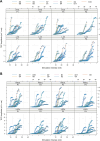
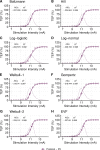

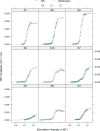
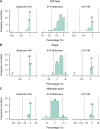
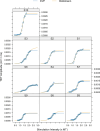
Similar articles
-
Transspinal stimulation increases motoneuron output of multiple segments in human spinal cord injury.PLoS One. 2019 Mar 7;14(3):e0213696. doi: 10.1371/journal.pone.0213696. eCollection 2019. PLoS One. 2019. PMID: 30845251 Free PMC article.
-
Physiological effects of cathodal electrode configuration for transspinal stimulation in humans.J Neurophysiol. 2022 Dec 1;128(6):1663-1682. doi: 10.1152/jn.00342.2022. Epub 2022 Nov 23. J Neurophysiol. 2022. PMID: 36416443 Free PMC article.
-
Repeated transspinal stimulation decreases soleus H-reflex excitability and restores spinal inhibition in human spinal cord injury.PLoS One. 2019 Sep 26;14(9):e0223135. doi: 10.1371/journal.pone.0223135. eCollection 2019. PLoS One. 2019. PMID: 31557238 Free PMC article. Clinical Trial.
-
Repeated cathodal transspinal pulse and direct current stimulation modulate cortical and corticospinal excitability differently in healthy humans.Exp Brain Res. 2019 Jul;237(7):1841-1852. doi: 10.1007/s00221-019-05559-2. Epub 2019 May 11. Exp Brain Res. 2019. PMID: 31079235
-
Rapid spinal mechanisms of motor coordination.Exerc Sport Sci Rev. 1999;27:255-84. Exerc Sport Sci Rev. 1999. PMID: 10791019 Review. No abstract available.
References
MeSH terms
LinkOut - more resources
Full Text Sources
Miscellaneous

